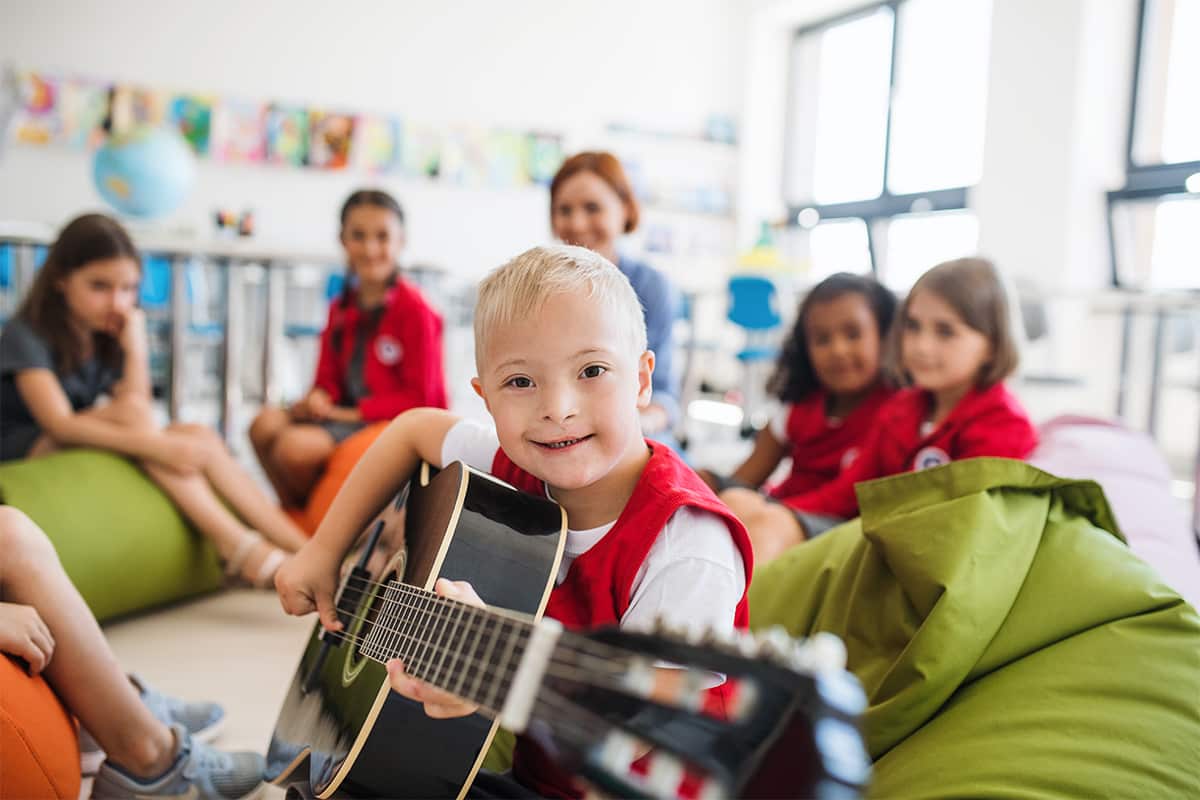
Some kids are uniquely gifted in certain areas like math, music, writing, or art. You might be amazed by their passionate expertise or advanced performance in a particular subject. Other kids are uniquely challenged with a disability that impacts their learning. They may need an Individualized Education Program (IEP) or 504 plan to address their learning needs. Still, others experience both giftedness and disability. They are referred to as twice-exceptional or 2E students.
Twice-exceptional students are found in all racial, ethnic, cultural, and socioeconomic groups. The 2E student may present as highly creative, imaginative, inquisitive, and verbal. They may be singularly focused on one area of expertise or might have a sharp sense of humor and advanced vocabulary. The nature of 2E students’ giftedness is unique to each child. But, most of them do share the experience of being misunderstood at school. Why is that?
Either giftedness or disability may obscure the other
It is easy for the strengths of twice-exceptional students to mask their disability, or the challenges of their disability to make their giftedness less apparent. For many of them, the juxtaposition of giftedness and disability leads to frustration and confusion at school and at home. Teachers and parents sometimes mistakenly believe the 2E child is unmotivated or simply not trying hard enough. This tends to happen when their strengths are more readily recognized than their weaknesses.
For example, a student with high intelligence in math may show superior problem-solving and calculation abilities. But, they may also have great difficulty with homework and project completion because of executive functioning challenges stemming from Attention-Deficit Hyperactivity Disorder (ADHD). The student’s grades may not be an accurate reflection of their understanding of the content, causing frustration for everyone!
Other 2E students may experience frustration when the focus of their school experience leans heavily toward the challenges or limitations of their disability instead of opportunities to delve into the areas in which they are gifted. If a student with a physical disability like cerebral palsy or Multiple Sclerosis requires assistive technology to move, manipulate classroom learning materials, or communicate, for example, school staff may be more inclined to miss their advanced skills in other areas.
What about IDEA?
The Individuals with Disabilities Education Act (IDEA) of 2004 is a federal education law that acts as a safeguard for students with disabilities, ensuring they are provided access to a free and appropriate public education in the least restrictive environment. IDEA does not specifically address 2E students, but the Department of Education has explicitly stated that students who have high cognition (e.g., giftedness) and who have disabilities that require special education and related services are protected under IDEA and its implementing regulations. In other words, twice-exceptional students are entitled to evaluations and all of the same protections under IDEA as their peers with disabilities who are not also gifted. The IEP team must consider the full range of services and accommodations in the development of the IEP.
How common are 2E students?
Because of the great variation in giftedness and the spectrum of disability in twice-exceptional students, it is difficult to determine the exact prevalence of 2E students in our nation’s schools. Experts have estimated that approximately 6 percent of students served by IDEA are also academically gifted students. However, the very definition of gifted is debatable. Some experts define gifted by a specific IQ score, and in other arenas, giftedness refers to “extraordinary capabilities in creative thinking, specific academic areas, psychomotor functioning, or visual/performing arts.” Regardless, it is reasonable to assume there are twice-exceptional students with unique learning needs in every school.
Questions to ask

If you are the parent or caregiver of a twice-exceptional student, ask your child’s school team how it is prepared to meet their unique needs. Consider these questions as a starting point.
- How does this school define giftedness? Are there specific tests that you use to identify gifted students? When are these screening measures given?
- Does this school offer specific programs for twice-exceptional students?
- How might you support a child like mine who thrives in some academic areas and requires specialized support and accommodations in other areas?
- Does the special education staff have experience working with 2E students?
- What types of enrichment activities are offered for gifted students?
- What resources does the school have to provide behavioral and social-emotional support for gifted students?
Next steps if you think you have a 2E child
If you think you may have a twice-exceptional child, a good first step is to talk to their teacher. You may also consider reaching out to a school psychologist or private psychologist, special education leader, school administrator, or pediatrician for additional insight. These professionals should be able to offer their observations about your child’s strengths and weaknesses, clear information about testing, and guidance for what to expect if you move forward with an evaluation, including services and opportunities for them.



